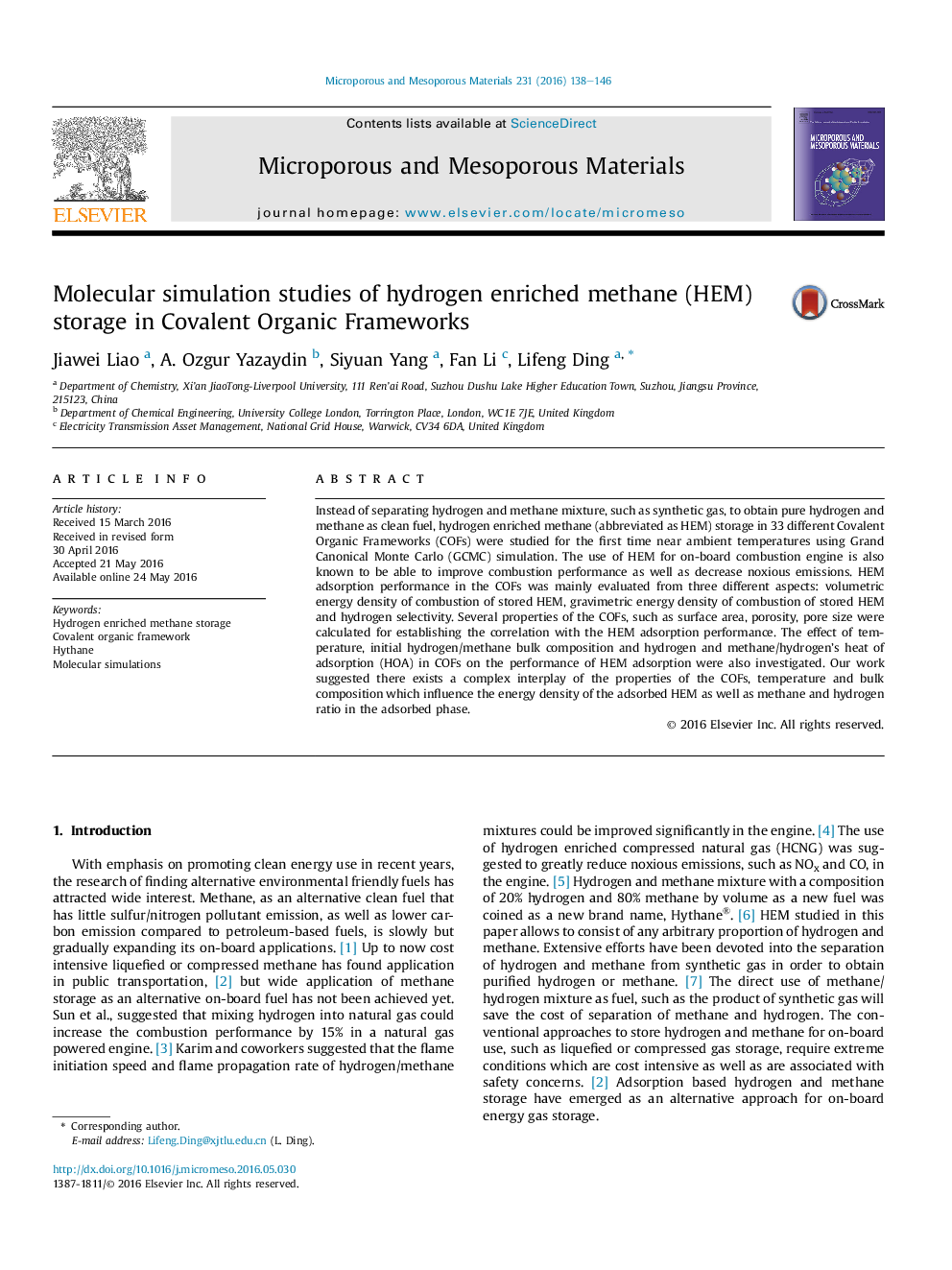| Article ID | Journal | Published Year | Pages | File Type |
|---|---|---|---|---|
| 71988 | Microporous and Mesoporous Materials | 2016 | 9 Pages |
•HEM storage in 33 different COFs were screened using GCMC simulations.•COF-105 and COF-108 outperform other COFs in terms of HEM volumetric energy storage and adsorbed hydrogen composition.•COFs with large pores will promote H2 adsorption selectivity in HEM storage
Instead of separating hydrogen and methane mixture, such as synthetic gas, to obtain pure hydrogen and methane as clean fuel, hydrogen enriched methane (abbreviated as HEM) storage in 33 different Covalent Organic Frameworks (COFs) were studied for the first time near ambient temperatures using Grand Canonical Monte Carlo (GCMC) simulation. The use of HEM for on-board combustion engine is also known to be able to improve combustion performance as well as decrease noxious emissions. HEM adsorption performance in the COFs was mainly evaluated from three different aspects: volumetric energy density of combustion of stored HEM, gravimetric energy density of combustion of stored HEM and hydrogen selectivity. Several properties of the COFs, such as surface area, porosity, pore size were calculated for establishing the correlation with the HEM adsorption performance. The effect of temperature, initial hydrogen/methane bulk composition and hydrogen and methane/hydrogen’s heat of adsorption (HOA) in COFs on the performance of HEM adsorption were also investigated. Our work suggested there exists a complex interplay of the properties of the COFs, temperature and bulk composition which influence the energy density of the adsorbed HEM as well as methane and hydrogen ratio in the adsorbed phase.
Graphical abstractFigure optionsDownload full-size imageDownload as PowerPoint slide
